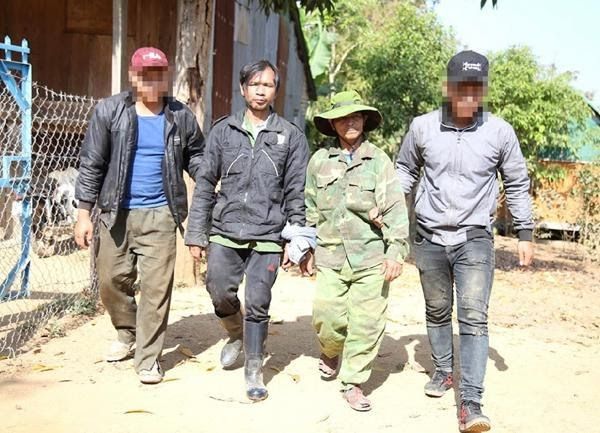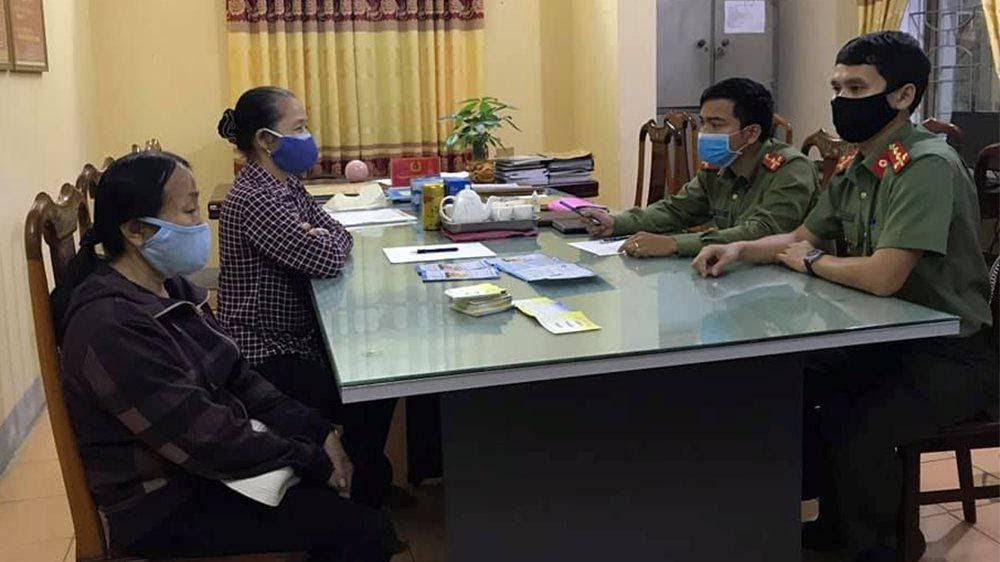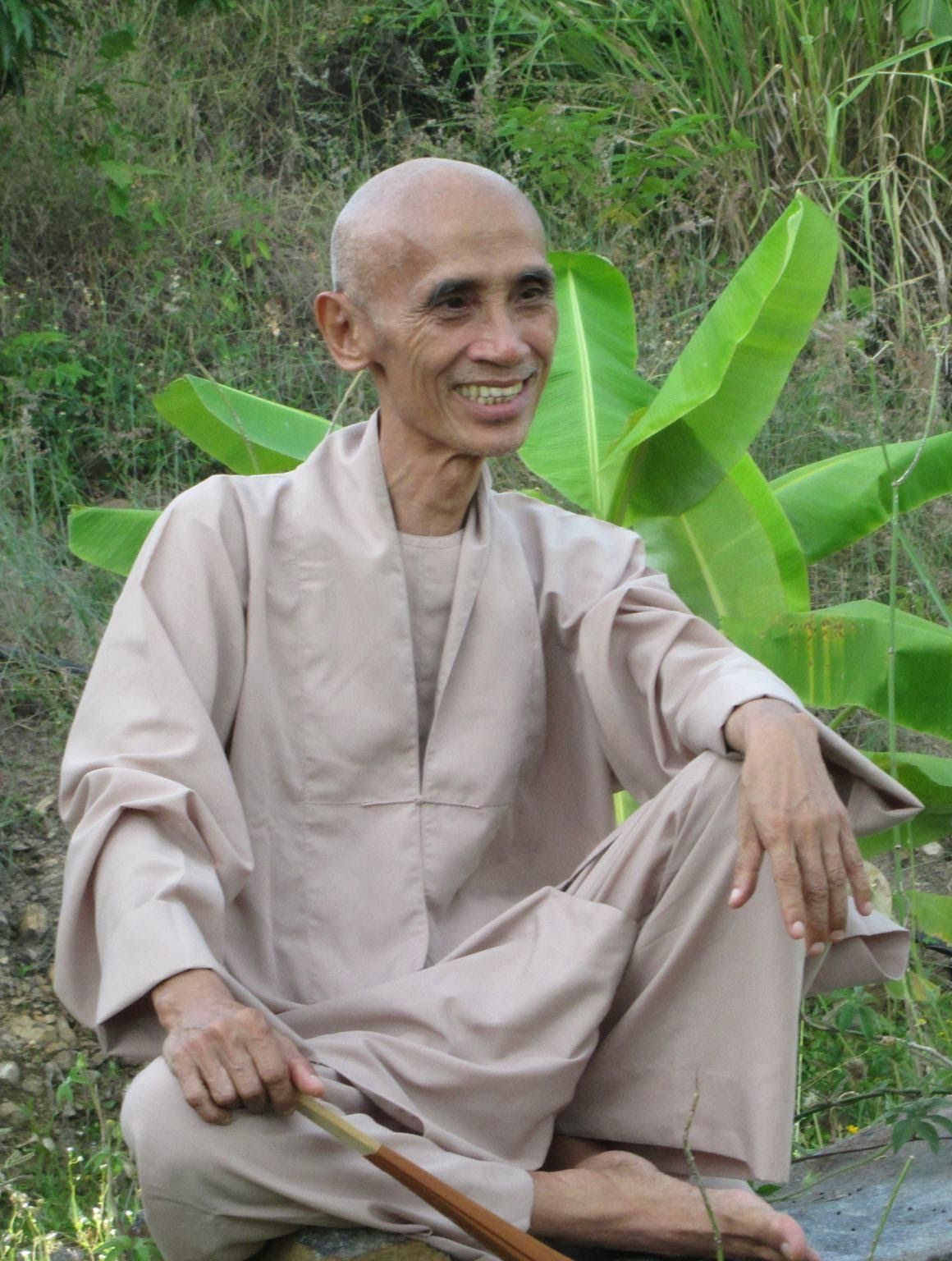Breaking Free from the “Procrustean Bed” of History
Thanh Tâm wrote this article in Vietnamese and published it in Luat Khoa Magazine on May 7, 2025. Đàm Vĩnh

The Report on Religious Freedom in Vietnam is published on the first Monday of each month. If you would like to contribute information to the report, please send it to tongiao@luatkhoa.org or editor@thevietnamese.org.
April’s [Religion 360°] will cover the month’s main religious developments, including the arrest of three ethnic Bahnar followers of the Ha Mon religion, the arrests of numerous Falun Gong proselytizers, and a number of other stories. We look back at the April 2004 protests over land and religious freedom in the Central Highlands in [On This Day]. And finally, [Did you know?] will discuss the custom of ancestral worship, which was almost wiped out after 1975.
According to Health & Life newspaper, three ethnic Bahnar, Ju,56, Lup, 50, and Kunh, 32 were arrested by Gia Lai provincial police on March 19, 2020, in a matter unrelated to FULRO (Front United Front for the Liberation of Oppressed Races) operations.
Kunh revealed to investigators that he was not directed or supported by FULRO forces, and that he had only kept in contact with an individual named Y Khoet, who was a follower of the Ha Mon religion in Kontum Province.
According to the above article, beginning in July 2012, the three arrested men would hide deep in the jungle during the day and then sneak into the village at night to talk to young people about the Ha Mon religion. On March 19, 2020, police arranged the capture of all three.

At the beginning of April, the website of the Government Committee for Religious Affairs announced its request to all provinces and cities to be on-guard for and prevent “extremist religious sects” from taking advantage of the COVID-19 pandemic to “assemble and incite large gatherings of people”.
The announcement also stated that provinces and cities needed to prevent people from transforming their residences into houses of worship, as well as organizing illegal collections of money for religious sects.
According to Procuracy, the online newspaper of the Supreme People’s Procuracy, at the end of March and beginning of April, Ha Tinh provincial police arrested and administratively punished four women and one man for illegally propagating Falun Gong as they distributed masks and religious pamphlets to residents.
Nghe An Newspaper also reported that three women were arrested and administratively punished at the end of March for illegally propagating Falun Gong.

In mid-April, provinces and cities made announcements regarding the supervision and prevention of activities by new religious sects, which they referred to as “strange religions” and “heresies” on their websites.
Similar to Khanh Hoa Province, Dak Lak provincial authorities reported that the “strange religions” in the region were: the “Supreme Master Ching Hai organization, Falun Gong, and the activities of extremist Protestant religious sects (such as the “Church of God and Heavenly Mother”, “Saving Grace”, “The Graceful Path”, “New Heaven and Earth” and otheres).” Besides these new religious groups, Binh Thuan provincial authorities also identified a number of others, such as the Buddhists of Miraculous Sound, Religion of Consistence, and the Supreme Order of Dragon & Flower.
Authorities of Hoa Binh Province in northern Vietnam announced that they are assigning the provincial Bureau of Internal Affairs the task of determining which illegal religious activities are those of “religious groups”, “assemblies”, and “religious organizations”.
On April 18, the Unified Buddhist Church of Vietnam announced the decision of the former Fifth Patriarch Thich Quang Do regarding the transfer of full church leadership powers to the Venerable Thich Tue Sy.
According to this decision, once Venerable Thich Tue Sy meets the requirements, he will convene an extraordinary assembly on behalf of the Patriarchal Institute to elect all positions in Hoa Dao Pagoda.
The Venerable Thich Quang Do signed the decision on May 24, 2019, before he passed away February 22, 2020. The signing ceremony was recorded, and Venerable Thich Tue Sy was present with many others.
Venerable Thich Tue Sy
Birth name: Pham Van Thuong

Birthdate: February 15, 1943
Entered monastery: 1950
Age: 77
Native region: Quang Binh Province
According to the Lotus Library, Venerable Thich Tue Sy is an erudite scholar of philosophy and Buddhism. He is fluent in many foreign languages and has contributed to the translation of many foreign books.
Before 1975, he participated in teaching and management at Van Hanh University. In 1984, he was arrested along with other monks while protecting the university after the authorities confiscated the property to turn it into Su Pham University. He was imprisoned until 1988, when he was sentenced to death for attempting to overthrow the state and establish a revolutionary organization. In 1998, his sentence was reduced, and he was released. According to RFA, he was kept under very strict house arrest until 2004.
According to VnExpress, on April 16, 2020, Ha Tinh Province decided to administratively punish seven Catholic priests for assembling parishioners for prayers during the government-ordered social distancing period.
The authorities stated that on April 4 and 5, six parishes in Ha Tinh organized prayer sessions for hundreds during church ceremonies.
Each priest was fined from 5 to 7.5 million dong (US$216 to US$325).
Government social-distancing orders were in effect from March 28, to April 22, 2020. During this time, religious activities and assemblies were greatly restricted; many instead took place on social media.
In April 2004, Vietnamese journalists reported that protests had broken out on April 10–11 in the three Central Highland provinces of Dak Lak, Gia Lai, and Dak Nong.
According to VnExpress, approximately 10,000 people participated in the protests on those two days.
The VnExpress article, along with other state newspapers, reported that local residents rode farm vehicles and motorcycles carrying deadly hunting weapons, swords, sticks, crossbows, and rock. The protestors caused riots by destroying property and stealing food items along the protest path.
The chairman of the Dak Lak Province People’s Committee, Nguyen Van Lang, asserted that these riots were organized by FULRO forces demanding the establishment of a separate, autonomous state.
However, according to Human Rights Watch (HRW), the primary reasons for the riots were harsh religious policies, unjust land policies, and government failure to guarantee social welfare in the Central Highlands. After protests in 2000, police launched several large waves of suppression against locals who wanted to practice independent religions.
Describing the method of suppression, the chairman of the Dak Lak Province People’s Committee stated: “In the latest event, we simply used the riot police and self-defense militia to restore order. After we gathered the women and children together, we explained to them that we had directed buses here to drive them directly back to their villages, so they could return to their normal lives.”
However, according to HRW, police used excessive force, killing 8 local people on the streets, while many others died behind bars.
The authorities did not announce the number of arrests after these protests. Nevertheless, an article in Vanguard Newspaper reported that in the last two months of 2004 alone, Gia Lai provincial police had arrested 146 local people with alleged ties to FULRO.
Siu Wiu, an ethnic Jrai, was forced to undergo extrajudicial re-education for participating in the 2004 protests. He stated to us that he went through re-education with 180 residents of Gia Lai. They had to labor heavily from morning to night while lacking sufficient food and shelter.
After the protests in 2004, the Central Highlands remained the site of many other protests by locals demanding religious freedom and the right to own land.
After the Saigon government fell in 1975, folk religious activities in the South were seen as “meaningless ceremonies”, “superstitions”, or “old-fashioned customs”. Ancestral worship was one of many activities that the state tried to abolish.
In the North, spiritual activities began to be abolished in 1940 after the Communist Party began to control a number of northern areas. In 1994, a study showed that for every 35 Vietnamese families surveyed (including those of cadres), only one family worshipped its ancestors. [12]
Research has revealed a number of reasons why the state limited or prohibited many religious activities after 1975:
According to Professor Philip Taylor, though they were prohibited, folk religious activities continued on in multi-faceted fashion, especially when the government opened up its doors to enact “Doi Moi” (economic and political reform in the mid-1980s).
In the late 1990s, government policy regarding faith and religion began to be researched for carrying out reform. The following reasons convinced the government to place religious and faith activities under its strict control:
In 2004, after nearly 30 years of abolishing customs and ceremonial offerings, the state officially recognized faith activities, but through a different lens.
According to the National Assembly’s 2004 Decree #21 regarding religion and faith: “Faith activities are activities that express the worship of ancestors; commemorating and honoring those who have served the country, the community….” Article 5 of this Decree affirms that ancestral worship is a national tradition.
See more: Vietnam after April 30th, 1975: how “superstition” became “national character” – Part 2
Vietnam's independent news and analyses, right in your inbox.